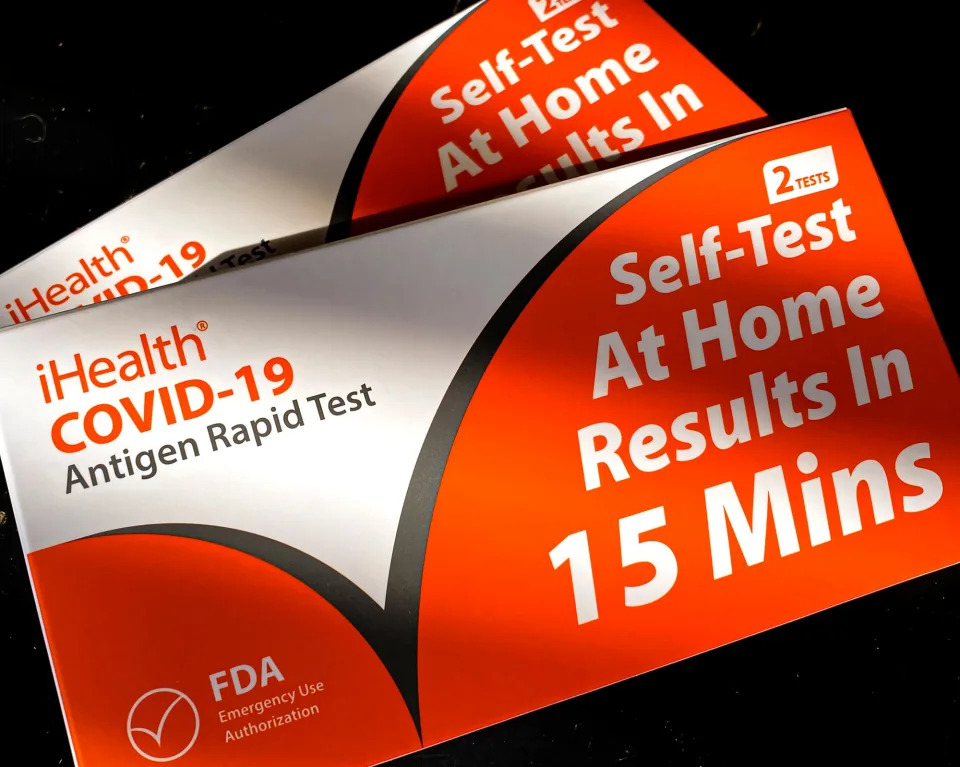The Oaklahoman
5 things to know about COVID variant XBB.1.5 and other strains circulating in Oklahoma
Dana Branham, Oklahoman – January 6, 2023

A new COVID-19 variant is taking hold across the country, threatening another wave of infections.
The highly contagious variant, XBB.1.5, has arrived in the United States and is quickly making up a large share of new cases across the country. In Oklahoma, the state’s Public Health Laboratory has identified two cases of XBB.1.5, according to the Oklahoma State Department of Health.
Cases and hospitalizations have begun to tick up again in Oklahoma, though they’re still at levels well below the heights they reached during the omicron surge in early 2022.
The state added 5,660 COVID-19 cases to its count this week — and that number only represents people whose tests were reported. At-home tests aren’t included in official counts.
Hospitalizations for COVID-19 climbed over 400 statewide this week.
Here’s what to know about XBB.1.5 and other COVID-19 variants circulating in Oklahoma.
Variant XBB:People who haven’t had COVID will likely catch XBB.1.5 – and many will get reinfected, experts say
1. New COVID variant has jumped significantly in just a few weeks
XBB.1.5 is getting attention because of how quickly it’s taken up a sizable share of the nation’s COVID-19 cases.
Estimates from the Centers for Disease Control and Prevention show that it’s making up about 28% of cases nationwide. That’s up from about 18% the week before and about 2% in early December. (Previous estimates showed a higher percentage of XBB.1.5 cases, but new forecasts showed a less dramatic increase.)
In Oklahoma’s region, which also includes Texas, Louisiana, Arkansas and New Mexico, XBB.1.5 makes up about 17% of current cases, according to CDC’s estimates.
2. COVID-Omicron XBB is particularly evasive
Part of what’s allowed XBB.1.5 to spread so quickly is that it doesn’t seem to be affected much by antibodies developed through a recent infection or vaccination.
“People who’ve previously been infected with COVID, or who have received the vaccine, even the most recent bivalent booster, this particular subvariant doesn’t seem to be as susceptible to the antibodies that you developed when you were either infected or got vaccinated,” said Dr. Dale Bratzler, the University of Oklahoma’s chief COVID officer. “So it’s spreading quite rapidly.”
Vaccination for COVID-19 is still effective at preventing severe disease or death from the virus, though you can still be infected even if you were vaccinated.
3. BQ.1 and BQ.1.1 still dominate in Oklahoma
For now, two other omicron subvariants — BQ.1 and BQ.1.1 — remain dominant in Oklahoma.
Combined, they make up about 63% of cases in the region.
4. Some therapies no longer effective against new variants
Some treatments used for COVID-19 in the past won’t work against newer variants.
Bebtelovimab, which was the only monoclonal antibody therapy providers had to treat patients with COVID-19, is no longer authorized for use because it isn’t expected to work against BQ.1 and BQ.1.1 subvariants, according to the Food and Drug Administration.
And Evusheld, a monoclonal antibody therapy used for pre-exposure protection against COVID-19 for immunocompromised and high-risk people, is also unlikely to work against newer variants.
At OU Health, “because now more than 80% of the strains that are circulating would not be expected to be prevented with Evusheld, we’ve elected to stop offering it to our patients,” Bratzler said.
5. Antivirals are still available to treat and prevent severe disease
But there are still treatment options to help prevent severe disease and death from COVID-19.
Antiviral drugs Paxlovid and remdesivir are still available and aren’t affected by the virus’ mutations.
Bratzler said he’s seen some troubling cases of high-risk COVID-19 patients being treated with “all sorts of stuff,” including antibiotics and steroids, instead of antivirals proven to work against COVID-19.
“I’m trying to get the message out to providers that antiviral drugs are the agents of choice when a high-risk individual tests positive for COVID,” he said. “I continue to see providers giving things that have not been shown to be useful and could even be harmful.”
